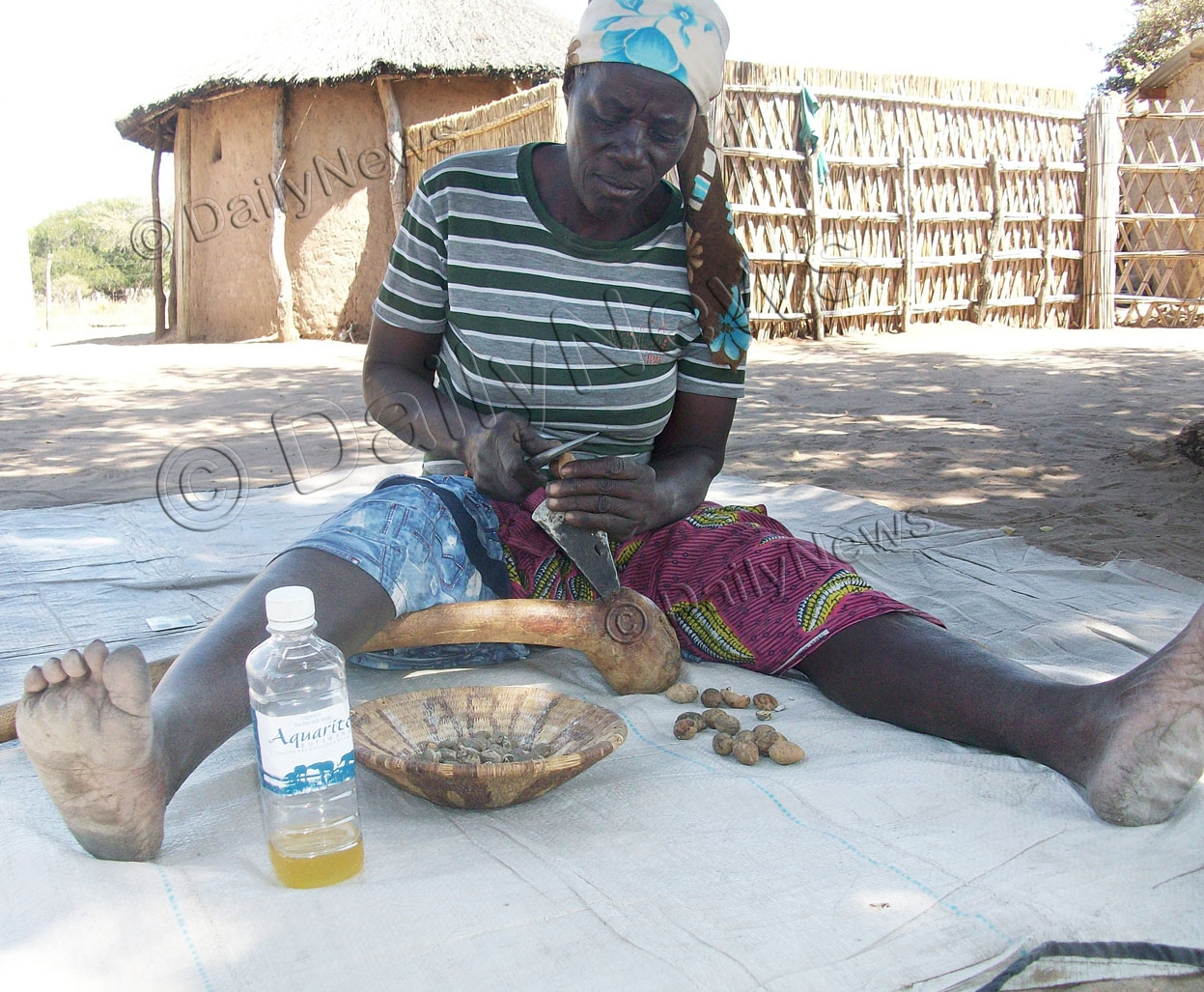Mahupe beats old age with Mongongo oil
27 Aug 2017
The sumptuous surroundings of the Okavango region, its flora and fauna reimburses residents in numerous ways.
The fruits, water, vegetables, soil, wildlife, trees and many more of its riches have sustained numerous lives in various ways from tourism, job opportunities and health just to mention few.
One life that is dwelling in the luxury of the Okavango is that of the 50-year-old Miss Nengu Mahupe of Nyembane ward in Shakawe, who extracts oil from mongongo tree for various uses.
The light brown or sometimes dark in colour mongongo fruit is egg-shaped and velvetish.
The fruit is not only nutritious, but it has many useful ways as a super emollient and shield for both skin and hair.
According to health experts, each seed contains a good amount of vitamins and nutrients that helps stave off skin damage.
Health experts say the oil is particularly great for people with inflamed scalps or dandruff as well as those with dry, rough or damaged hair as it lowers inflammation and repair cells, prevents hair damage caused by sun, repairs and moisturises mature and damaged skin, maintains luster and shine of the hair through its richness in vitamins.
Miss Mahupe says back in history when there were no lotions Hambukushu and Basarwa generations applied it to their bodies leaving the skin soothed, fresh, naturally glowing and beautiful, adding that it also helped protect them from direct sunlight heat.
She says the oil also remains on the skin longer to deliver a protective, emollient layer on the surface of the skin and acts as a barrier to prevent moisture from escaping through the pores as well as helping in regenerating and moisturising the skin.
Miss Mahupe says the oil is still relevant though many people have turned to the so-called modern lotions, which they carry in their purses and handbags, but she uses both the traditional lotion and modern ones to cut expenses.
The Eretsha native also extracts mongongo oil for frying, roasting and baking as it provides a large amount of proteins and energy.
She uses the oil to cook food just like other oils and it is best to use as it is naturally extracted without any combination of ingredients which at times cause diseases.
She explains that the kernel is extracted from the cover with the force of two axes to break the shell and get the inner kernel which produces oil.
It is roasted until it is golden brown and greasy, then crushed with a pestle.
After they have crushed it, a cup of warm water is added and mixed well.
The brown water is poured into a pot and heated for some minutes, continuously stirred until the oil covers the top layer.
The oil is carefully scooped with a spoon into a container and left to cool.
The remaining mongongo meal, which is like soft porridge, can be mixed with a lot from meat, morogo, beans, samp, rice, as well as soft porridge and can be served with pap or bogobe.
The oil, just like other cooking oils and hair food, lasts longer depending on the users preferred storage period and care.
Mongongo in the region is affectionately called seven days because back then it was believed that once you ingest it, it smells on your body for about seven days.
All these was set to encourage hygiene as people barely cleaned up they would be assumed to be smelling of mongongo.
Kgosi Mboma Diziro of Shakawe says mongongo can also be eaten in two ways, as a snack and a full meal.
As a snack a juice called dikuya is made from the ripe mongongo.
The fruits are soaked for some hours until they become thick, stirred and thereafter the seeds are removed from the juice which will now be ready for consumption.
It is said to be rich in nutrients and since they grow naturally without additional fertilizers, they are said to be healthy.
The stem of Mongongo tree is also used to make mekoro or traditional canoes, a vital equipment in fishermen’s lives and other people who use it for tourism and transport.
In some Sub-Saharan African countries where mongongo also grows, it is called Manketti tree.
It can survive droughts and other extreme weather conditions, hence it can fare well in the deep sands of the Okavango.
It is said the tree does not bear fruit until it is 25 years old and the flowers begin to bloom and bear their oval, plum-like fruit in late October.
The green fuzzy fruit fall from the trees around April until May where they continue to mature.
Elephants adore the sweet fruit that goes from green to brown as it matures on the ground.
The elephants poop the nuts making it easier for collection by other animals and humans.
Those who have used all mongongo fruit ingredients attest to what Mis Mahupe says and encourage people to use it.
As for Miss Mahupe, she would not rest until she has found a bigger working place to operate from with the ambition to sell mongongo oil nationwide.
She is intending to seek help from government to fund her business and grow it bigger. ENDS
Source : BOPA
Author : Kesentseng Baagedi
Location : ERETSHA
Event : Interview
Date : 27 Aug 2017






